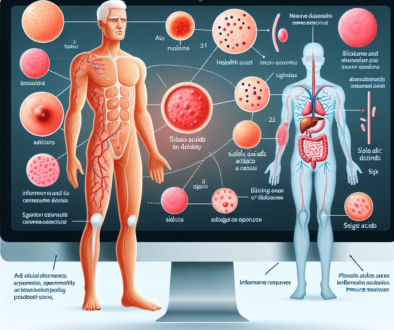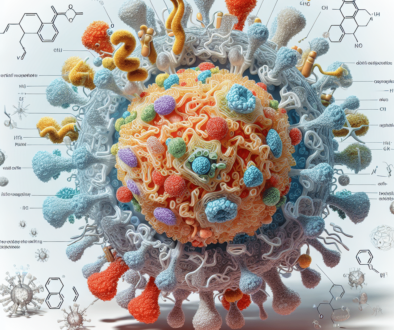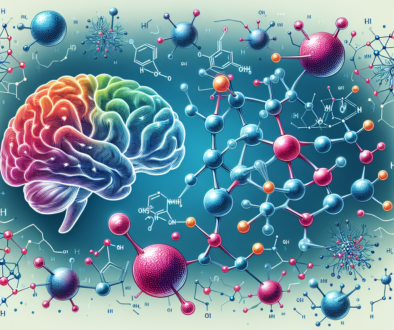What does sialic acid do to viruses?
-
Table of Contents
- Sialic Acid’s Role in Viral Infections: A Deep Dive into Pathogen Interaction
- Understanding Sialic Acid
- How Sialic Acid Interacts with Viruses
- Examples of Viruses Utilizing Sialic Acid
- Therapeutic Implications of Sialic Acid in Viral Infections
- Case Studies and Statistics
- Conclusion: The Significance of Sialic Acid in Viral Pathogenesis
- Discover ETprotein’s High-Quality Protein Products
Sialic Acid’s Role in Viral Infections: A Deep Dive into Pathogen Interaction

Viruses are microscopic agents that can cause a wide range of diseases, from the common cold to severe conditions like HIV/AIDS or COVID-19. Understanding how viruses interact with their hosts is crucial for developing effective treatments and vaccines. One key player in this interaction is sialic acid, a sugar molecule found on the surface of cells. This article explores the role of sialic acid in viral infections, shedding light on its importance in the life cycle of viruses and potential therapeutic implications.
Understanding Sialic Acid
Sialic acid is a term used to describe a family of more than 50 derivatives of neuraminic acid. These sugars are typically found at the outermost end of glycan chains on the surface of cells. They play a significant role in various biological processes, including cell-cell communication, and serve as receptors for many pathogens, including viruses.
How Sialic Acid Interacts with Viruses
For many viruses, sialic acid serves as a point of attachment and entry into host cells. The interaction between viral proteins and sialic acid is a critical first step in the infection process. Here’s how it typically works:
- Attachment: Viruses have proteins on their surface that can bind to sialic acid molecules on the host cell’s membrane.
- Entry: Once attached, the virus can either fuse with the host cell membrane or be taken up by the cell through endocytosis, allowing the viral genome to enter the host cell.
- Escape: After replication, newly formed viruses often use sialidases, also known as neuraminidases, to cleave sialic acid residues and release themselves from the host cell.
This interaction is not only crucial for the initial infection but also for the spread of the virus within the host organism.
Examples of Viruses Utilizing Sialic Acid
Several well-known viruses use sialic acid to infect cells. Here are a few examples:
- Influenza: The influenza virus uses hemagglutinin, a glycoprotein on its surface, to bind to sialic acid on respiratory tract cells. Neuraminidase, another viral protein, helps release new virus particles by cleaving sialic acid.
- Coronaviruses: Some coronaviruses, including strains that cause common colds and the novel SARS-CoV-2, can bind to sialic acid-containing receptors to gain entry into cells.
- Paramyxoviruses: Viruses like the parainfluenza virus and Newcastle disease virus also use sialic acid as a receptor to infect host cells.
Therapeutic Implications of Sialic Acid in Viral Infections
The interaction between sialic acid and viruses has significant implications for the development of antiviral drugs and vaccines. For instance:
- Neuraminidase Inhibitors: Drugs like oseltamivir (Tamiflu) and zanamivir (Relenza) are designed to inhibit the neuraminidase enzyme, preventing the release of influenza virus particles and thereby limiting the spread of infection.
- Vaccine Development: Understanding the specific interaction between viral proteins and sialic acid can inform the design of vaccines that elicit an immune response targeting these viral components.
- Decoy Receptors: Synthetic sialic acid-containing compounds can act as decoy receptors, binding to viruses and preventing them from attaching to actual host cells.
Research into sialic acid and its role in viral infections continues to be a promising avenue for new therapeutic strategies.
Case Studies and Statistics
Several studies have highlighted the importance of sialic acid in viral infections:
- A study on the 2009 H1N1 influenza pandemic revealed that mutations in the hemagglutinin protein affected the virus’s ability to bind to sialic acid, influencing the severity of the disease.
- Research on SARS-CoV-2 has shown that while the primary receptor is ACE2, sialic acid residues may facilitate the initial contact between the virus and host cells.
Statistics from antiviral treatments also underscore the role of sialic acid. For example, during the 2017-2018 flu season, the CDC reported that antiviral medications were prescribed in nearly 25% of influenza-positive outpatient visits.
Conclusion: The Significance of Sialic Acid in Viral Pathogenesis
In conclusion, sialic acid plays a multifaceted role in viral infections. It acts as a critical receptor for many viruses, influencing their ability to attach, enter, and escape from host cells. The ongoing research into this interaction holds promise for the development of novel antiviral therapies and vaccines. By targeting the specific mechanisms by which viruses exploit sialic acid, scientists aim to curb the spread of viral diseases and improve global health outcomes.
Discover ETprotein’s High-Quality Protein Products
If you’re in the market for premium protein products, consider ETprotein’s offerings. Their extensive range of organic bulk vegan proteins and L-(+)-Ergothioneine (EGT) caters to various industries, including nutraceuticals, pharmaceuticals, and food and beverage. With a commitment to quality and customer satisfaction, ETprotein is your go-to source for protein needs.
About ETprotein:
ETprotein, a reputable protein and L-(+)-Ergothioneine (EGT) Chinese factory manufacturer and supplier, is renowned for producing, stocking, exporting, and delivering the highest quality organic bulk vegan proteins and L-(+)-Ergothioneine. They include Organic rice protein, clear rice protein, pea protein, clear pea protein, watermelon seed protein, pumpkin seed protein, sunflower seed protein, mung bean protein, peanut protein, and L-(+)-Ergothioneine EGT Pharmaceutical grade, L-(+)-Ergothioneine EGT food grade, L-(+)-Ergothioneine EGT cosmetic grade, L-(+)-Ergothioneine EGT reference grade and L-(+)-Ergothioneine EGT standard. Their offerings, characterized by a neutral taste, non-GMO, allergen-free attributes, with L-(+)-Ergothioneine purity over 98%, 99%, cater to a diverse range of industries. They serve nutraceutical, pharmaceutical, cosmeceutical, veterinary, as well as food and beverage finished product distributors, traders, and manufacturers across Europe, USA, Canada, Australia, Thailand, Japan, Korea, Brazil, and Chile, among others.
ETprotein specialization includes exporting and delivering tailor-made protein powder and finished nutritional supplements. Their extensive product range covers sectors like Food and Beverage, Sports Nutrition, Weight Management, Dietary Supplements, Health and Wellness Products, and Infant Formula, ensuring comprehensive solutions to meet all your protein needs.
As a trusted company by leading global food and beverage brands and Fortune 500 companies, ETprotein reinforces China’s reputation in the global arena. For more information or to sample their products, please contact them and email sales(at)ETprotein.com today.












